Buildings around the globe showcase diverse designs and materials, yet a familiar palette dominates: wood, brick, stone, metal, and glass. Constructing structures from solid rock remains an unconventional and immensely challenging feat. However, across history and continents, awe-inspiring instances of Rock-cut Architecture stand as testaments to human ingenuity and dedication. These remarkable creations, carved directly into existing rock formations, offer a unique perspective on architectural possibilities.
What Defines Rock-Cut Architecture?
 Elaborate columns carved directly from the rock within the Ellora Caves
Elaborate columns carved directly from the rock within the Ellora Caves
Unlike conventional buildings that are erected using assembled materials, rock-cut architecture adopts a subtractive approach. Spaces and forms are meticulously carved out from solid natural rock. This process, often starting with natural caves and evolving into elaborate structures, or conceived entirely as man-made excavations, results in breathtaking monuments. The following examples represent some of the most exceptional rock-cut architectural achievements found anywhere in the world, each telling a story of culture, faith, and human ambition etched in stone.
Exploring the Pinnacle of Rock-Cut Architecture
1. Petra, Jordan: The Rose City Carved in Stone
The iconic Treasury (Al-Khazneh) of Petra, a prime example of Nabataean rock-cut craftsmanship in Jordan.
Deep within the arid landscapes of modern-day Jordan lies Petra, a city carved into sandstone cliffs that defies expectations. Built by the Nabataean civilization, Petra flourished in the 1st century CE, reaching its zenith as a crucial trading hub. This UNESCO World Heritage Site mesmerizes visitors with its elaborate rock-cut stonework. The iconic Al-Khazneh (The Treasury), exemplifies the extraordinary skill of Nabataean architects, who carved its majestic façade from top to bottom, creating stairs as they descended.
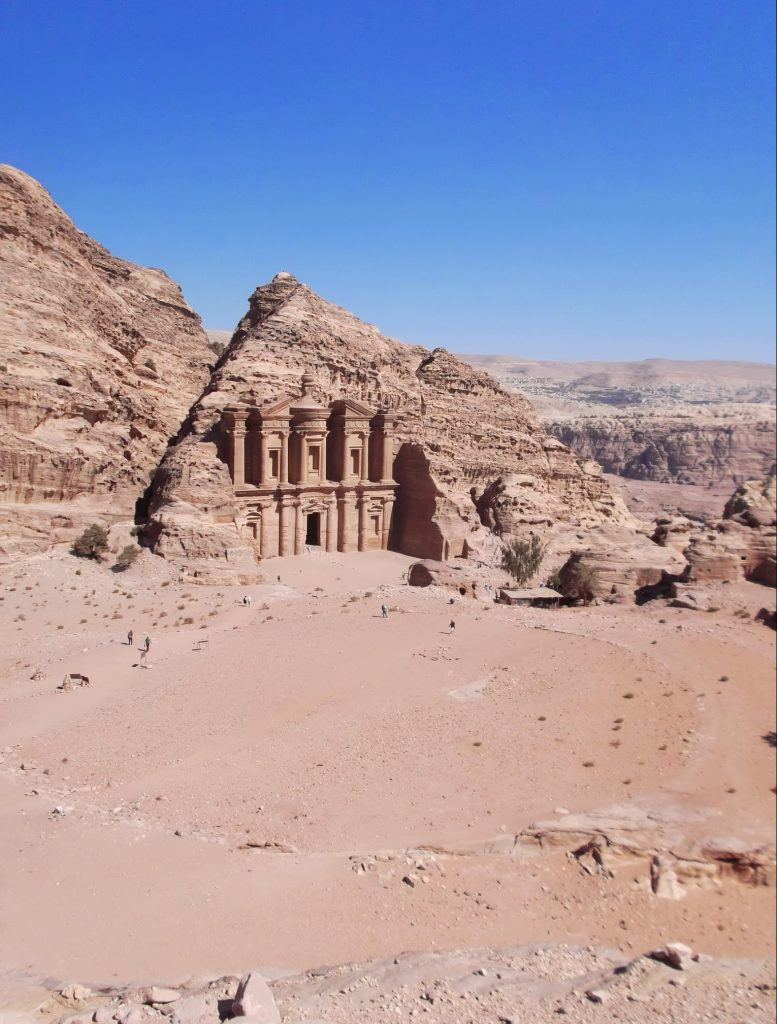 A panoramic view of Ad Deir (The Monastery) in Petra, Jordan, highlighting the scale of Nabataean rock-cut monuments.
A panoramic view of Ad Deir (The Monastery) in Petra, Jordan, highlighting the scale of Nabataean rock-cut monuments.
Ad Deir (The Monastery), another colossal façade, mirrors the grandeur of the Treasury in another part of the city. Petra’s architectural marvels were fueled by the Nabataeans’ strategic control of trade routes, amassing wealth through commerce. Beyond their architectural prowess, the Nabataeans were also accomplished civil engineers, ingeniously transforming the desert into a fertile oasis through sophisticated irrigation and water storage systems.
2. Kailasa Temple and Ellora Caves, India: A Symphony in Basalt
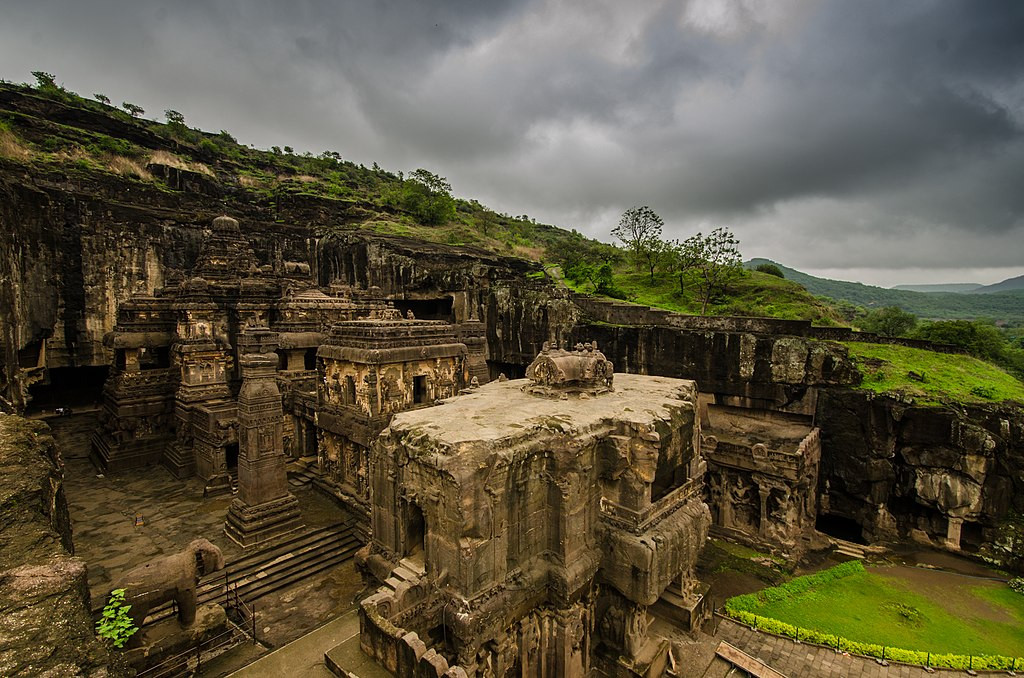 The Kailasa Temple, the centerpiece of the Ellora Caves, showcasing monolithic rock-cut temple architecture.
The Kailasa Temple, the centerpiece of the Ellora Caves, showcasing monolithic rock-cut temple architecture.
Rock-cut architecture holds a significant place in Indian temple traditions, and the Kailasa Temple at Ellora stands as a supreme example. Part of the extensive Ellora Caves complex, this temple is believed to have been carved in the 8th century CE. Leveraging the natural slope of the rocky hillside, the builders created a temple that appears to emerge organically from the landscape itself.
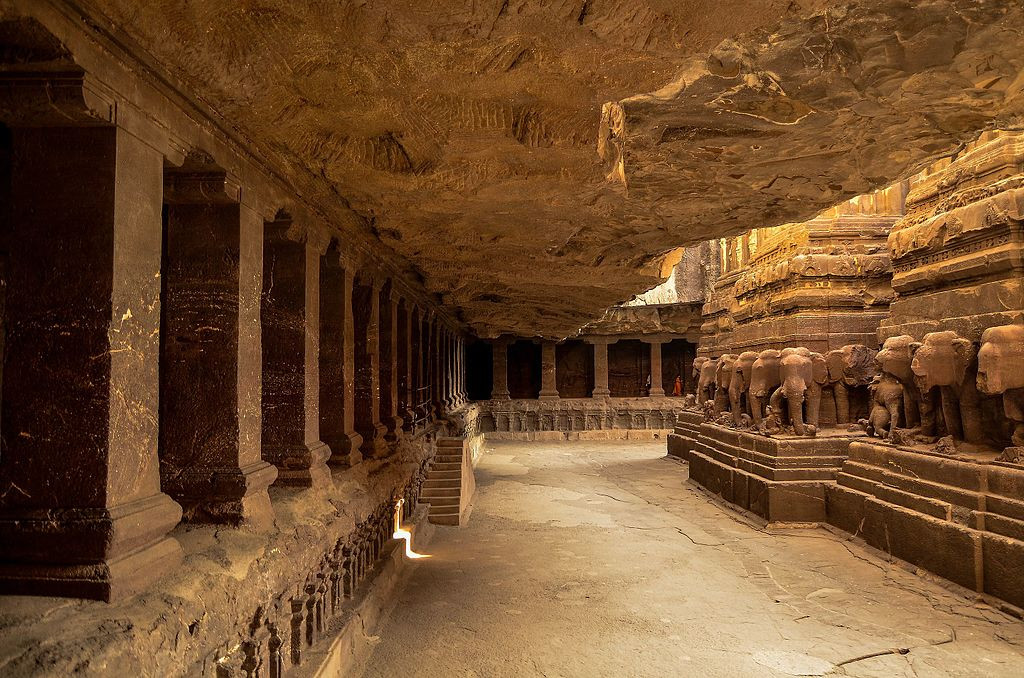 Intricate sculptural elements within the Kailasa Temple, Ellora Caves, demonstrating the artistic detail in rock-cut temples.
Intricate sculptural elements within the Kailasa Temple, Ellora Caves, demonstrating the artistic detail in rock-cut temples.
The Kailasa Temple is adorned with remarkable sculptural elements, including intricately carved statues and panels. Its vast interior spaces, entirely hewn from rock, and its elaborate exterior, demanded immense labor and skill to carve out of the basalt hillside. Dedicated to Hindu deities, the temple complex houses numerous symbolic representations and statues. The Ellora Caves, including the Kailasa Temple, were designated a UNESCO World Heritage Site in 1983, recognizing their unparalleled artistic and historical value.
3. Churches of Lalibela, Ethiopia: Monolithic Marvels of Faith
 Saint George Church of Lalibela, Ethiopia, a cruciform monolithic rock-cut church.
Saint George Church of Lalibela, Ethiopia, a cruciform monolithic rock-cut church.
Lalibela, a town in northern Ethiopia, is celebrated for its extraordinary rock-cut churches. Eleven distinct churches, dating from the 12th to 13th centuries, comprise this remarkable collection, a UNESCO World Heritage Site. Biete Giyorgis (Church of Saint George), with its distinctive cruciform plan, is carved directly from a hillside of solid rock. These churches are not built in caves but are freestanding structures carved downwards into the earth.
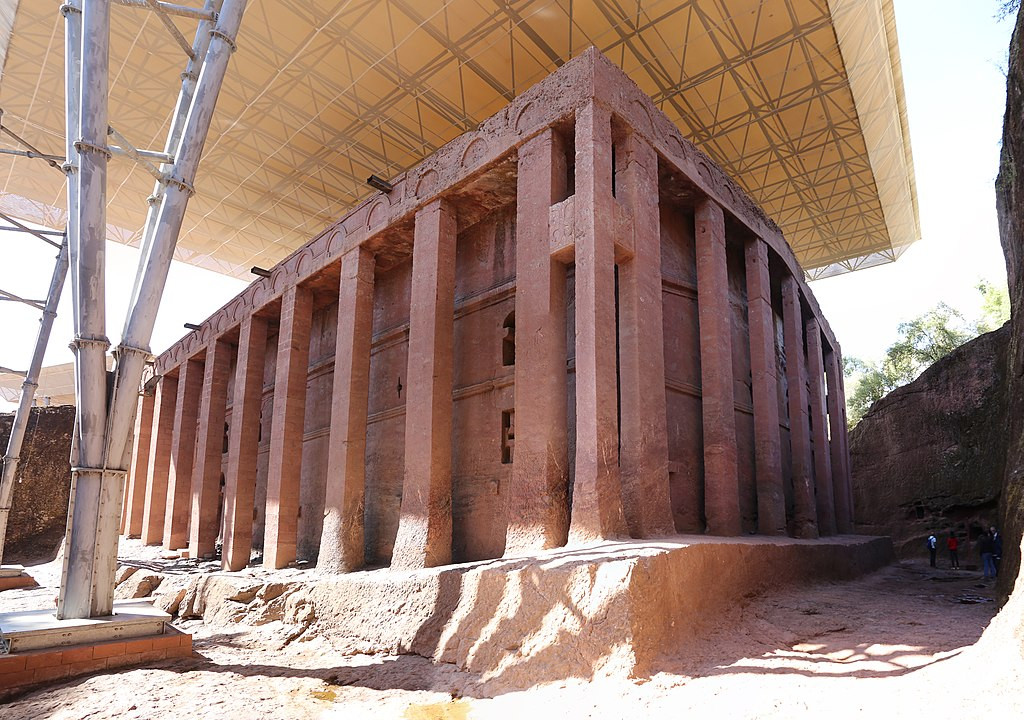 Biete Medhani Alem, the largest monolithic rock-cut church in Lalibela, Ethiopia, showcasing its scale and colonnaded facade.
Biete Medhani Alem, the largest monolithic rock-cut church in Lalibela, Ethiopia, showcasing its scale and colonnaded facade.
Biete Medhani Alem is considered the largest monolithic rock-cut church globally. Its main façade, featuring an outer colonnade and a separate inner wall, presented significant construction challenges. Today, Lalibela, with its eleven rock-cut churches, stands as a major pilgrimage destination in Ethiopia. Increased visitor interest has spurred funding for restoration projects, including a modern canopy protecting Biete Medhani Alem.
4. Abu Simbel Temples, Egypt: Ramesses the Great’s Enduring Legacy
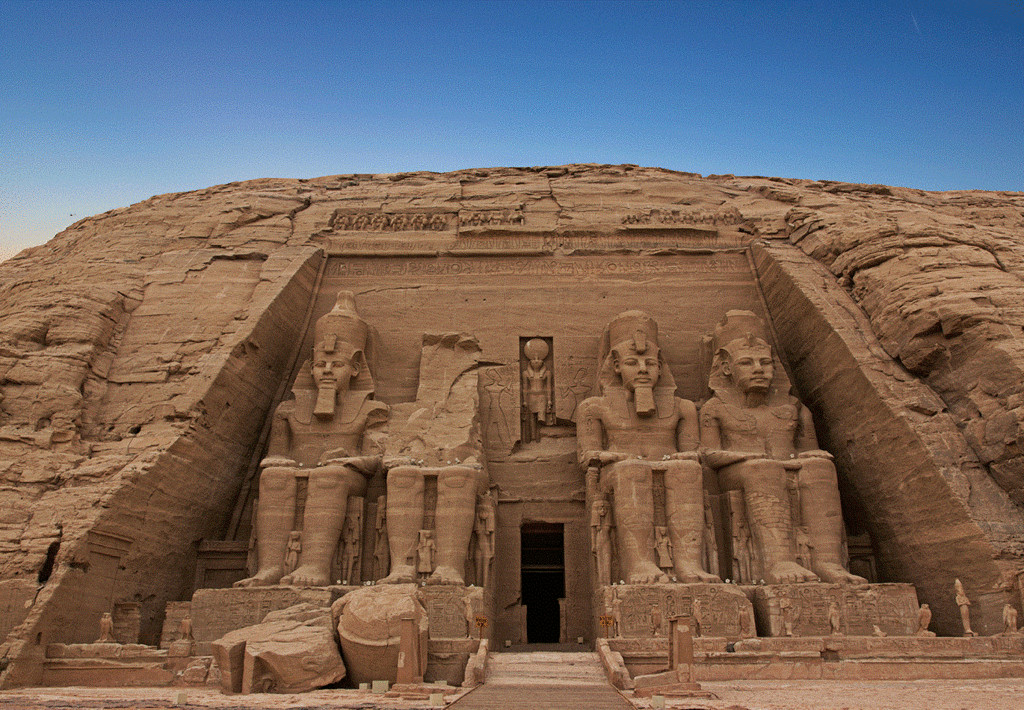 The Great Temple of Abu Simbel, built by Ramesses II, exemplifies Egyptian rock-cut architecture.
The Great Temple of Abu Simbel, built by Ramesses II, exemplifies Egyptian rock-cut architecture.
Ramesses II, or Ramesses the Great, one of Egypt’s most powerful pharaohs, reigned for 66 years, a period considered a golden age in Egyptian history. The rock-cut temples of Abu Simbel vividly illustrate his immense power and ambition. The four colossal statues at the Great Temple’s entrance, each 66 feet (20 meters) tall, were strategically positioned overlooking the Nile River. Their location served as a powerful declaration to anyone navigating the river, announcing their entry into the domain of the mighty Ramesses.
 The Small Temple of Abu Simbel, dedicated to Queen Nefertari, showcasing Egyptian rock-cut temple architecture.
The Small Temple of Abu Simbel, dedicated to Queen Nefertari, showcasing Egyptian rock-cut temple architecture.
Adjacent to the Great Temple stands a smaller temple dedicated to Nefertari, Ramesses II’s wife. Nefertari, one of Egypt’s most influential queens, is recognized as a powerful figure in Egyptian history. Her temple at Abu Simbel stands as a testament to her enduring legacy and Ramesses’s respect for her.
5. Hegra, Saudi Arabia: Nabataean Majesty Beyond Petra
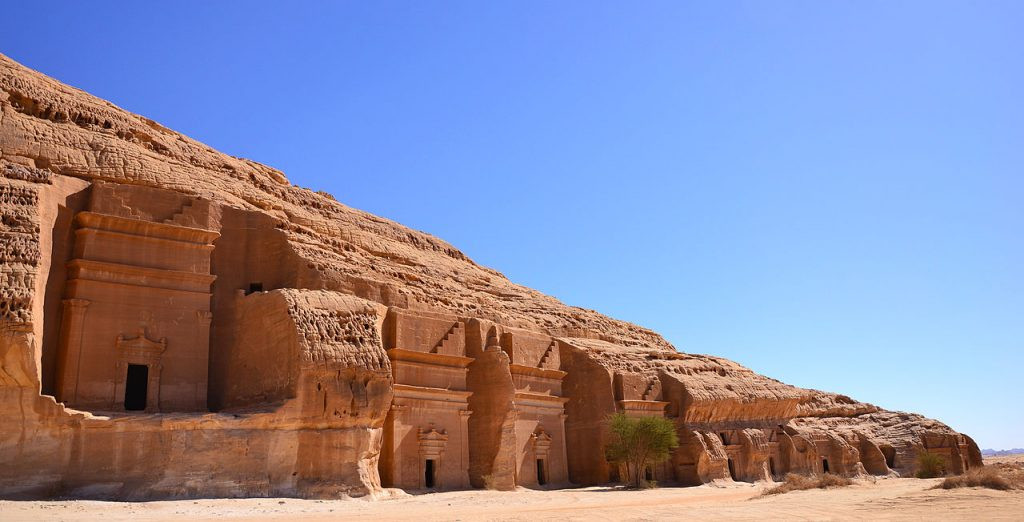 Rock-cut tombs at Hegra (Mada'in Salih), Saudi Arabia, demonstrating Nabataean architectural style outside Petra.
Rock-cut tombs at Hegra (Mada'in Salih), Saudi Arabia, demonstrating Nabataean architectural style outside Petra.
In the arid deserts of Saudi Arabia lies Hegra, another Nabataean settlement, built by the same civilization behind Petra’s rock-cut wonders. Hegra, also known as Mada’in Salih, while less famous than Petra, is an equally remarkable example of rock-cut architecture. Like many sites on this list, Hegra’s most elaborate monuments are the tombs of former rulers and elite citizens.
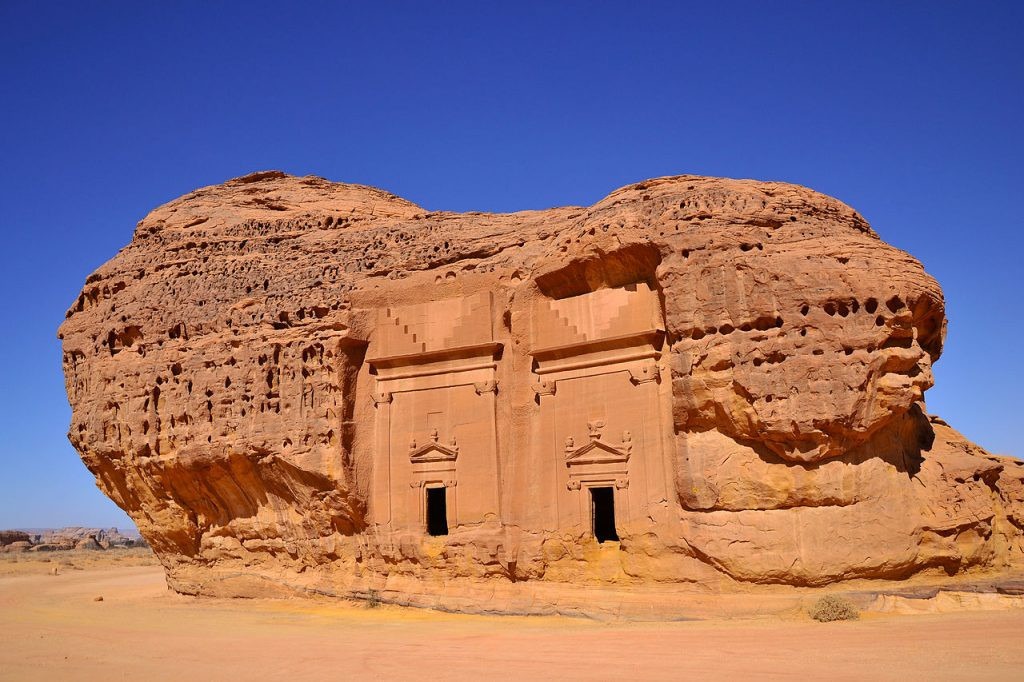 Detailed carvings on rock-cut facades at Hegra, Saudi Arabia, highlighting Nabataean artistic skills.
Detailed carvings on rock-cut facades at Hegra, Saudi Arabia, highlighting Nabataean artistic skills.
Hegra prospered during the 1st century CE, becoming the second-largest city in the Nabataean Kingdom after Petra. Strategically located on a vital trade route connecting the Arabian Peninsula with Egypt, the Levant, and the Mediterranean Sea, Hegra amassed wealth through the trade of precious metals, spices, and valuable aromatic resins like frankincense and myrrh.
6. Ajanta Caves, India: Buddhist Art in Basalt Cliffs
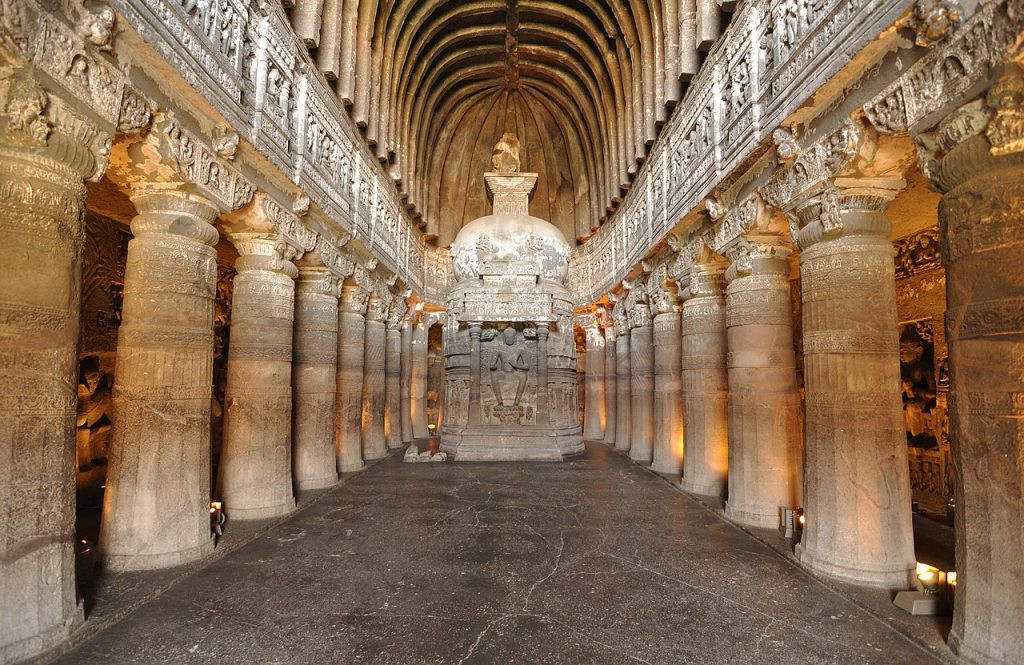 Cave 26, Ajanta Caves, India, showcasing Buddhist rock-cut cave architecture with stupas and carvings.
Cave 26, Ajanta Caves, India, showcasing Buddhist rock-cut cave architecture with stupas and carvings.
The Ajanta Caves, near the Ellora Caves, further exemplify the unique rock-cut architectural style prevalent on the Indian subcontinent. This site comprises 30 monuments, with interior chambers entirely carved from solid rock. Cave 26 is particularly notable, featuring a spacious interior aisle flanked by a colonnade and a traditional Buddhist stupa at its center. The Ajanta caves are renowned for their murals and paintings, alongside their rock-cut architecture.
7. Lycian Tombs, Turkey: Echoes of Ancient Lycia
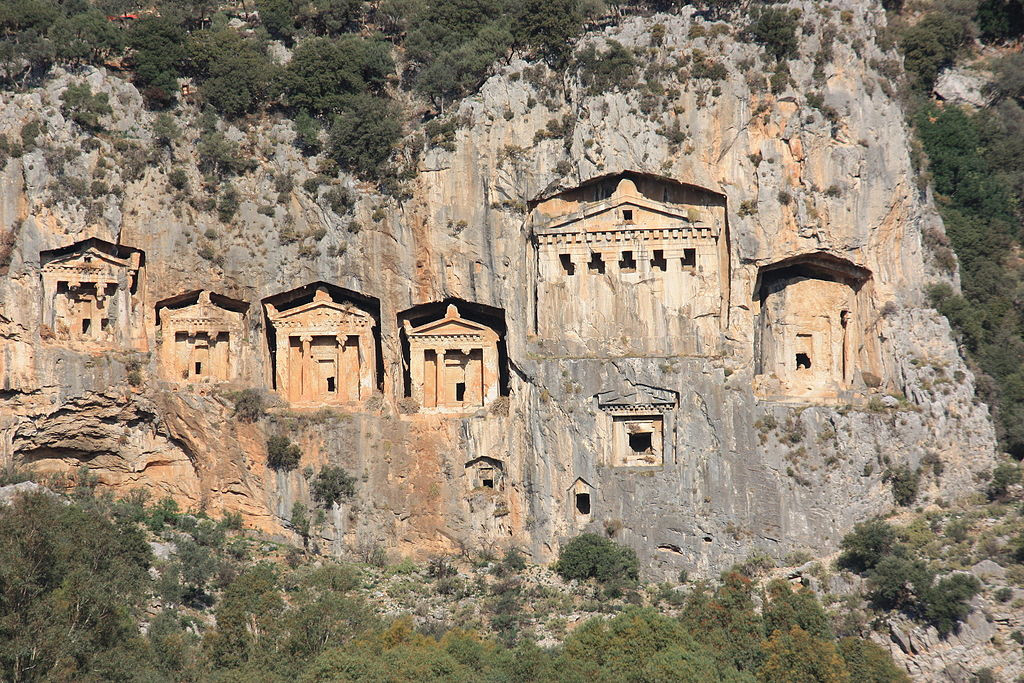 Lycian Tombs in Dalyan, Turkey, carved into vertical cliff faces, showcasing rock-cut funerary architecture.
Lycian Tombs in Dalyan, Turkey, carved into vertical cliff faces, showcasing rock-cut funerary architecture.
Throughout the historical region of Lycia in southwestern Turkey, numerous rock-cut structures from around 450-300 BCE can be found. The largest concentration of these Lycian rock-cut tombs is located near Dalyan. These five tombs are carved into a near-vertical cliff face, exhibiting elements of Lycian architecture, influenced by nearby Greek building traditions.
8. Longmen Grottoes, China: A Thousand Years of Buddhist Sculpture
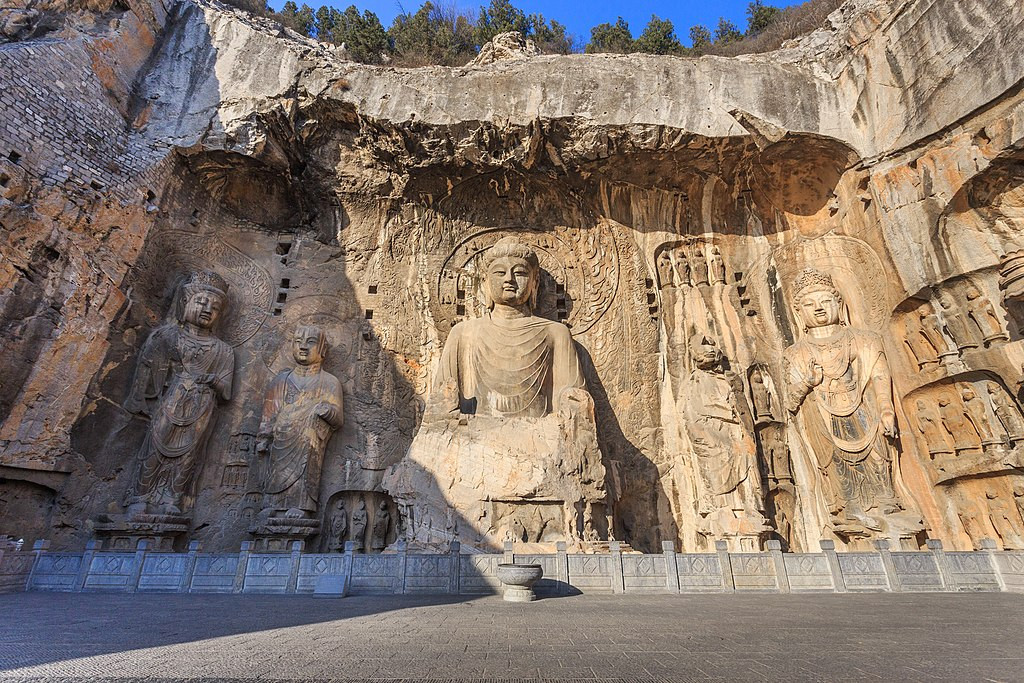 Longmen Grottoes, Luoyang, China, a UNESCO site with tens of thousands of Buddhist rock-cut statues and shrines.
Longmen Grottoes, Luoyang, China, a UNESCO site with tens of thousands of Buddhist rock-cut statues and shrines.
The Longmen Grottoes, south of Luoyang, represent a pinnacle of Chinese Buddhist art and architecture. This UNESCO-listed site contains tens of thousands of rock-cut statues and shrines. Carved over centuries, starting in the 5th century, the grottoes have endured erosion and looting but remain a testament to the enduring influence of Buddhism in China.
9. Naqsh-e Rostam, Iran: Persian Imperial Necropolis
Panoramic view of Naqsh-e Rostam, a necropolis with rock-cut tombs of Persian emperors in Iran.
Naqsh-e Rostam, near Persepolis, the ancient Persian capital, served as a necropolis during the Achaemenid Dynasty (500-300 BCE). High-ranking officials of the vast Persian Empire were buried here in elaborate rock-cut tombs. These tombs, along with nearby rock carvings, powerfully symbolize the might and grandeur of the Persian Empire during this era.
10. Varaha Cave Temple, India: Pallava Dynasty Artistry
 Varaha Cave Temple, Mamallapuram, India, showcasing Pallava rock-cut architecture with lion pillars.
Varaha Cave Temple, Mamallapuram, India, showcasing Pallava rock-cut architecture with lion pillars.
Located in South India, the Varaha Cave Temple exemplifies the architecture of the Pallava Dynasty. The cave entrance is adorned with four distinctive columns featuring seated lions at the base and unique decorative capitals. Dating to the late 7th century CE, the Varaha Cave Temple is remarkably preserved, owing partly to its remote location.
11. Monumental Rock-Cut Tombs of Jerusalem, Israel: Ancient Jewish Burial Sites
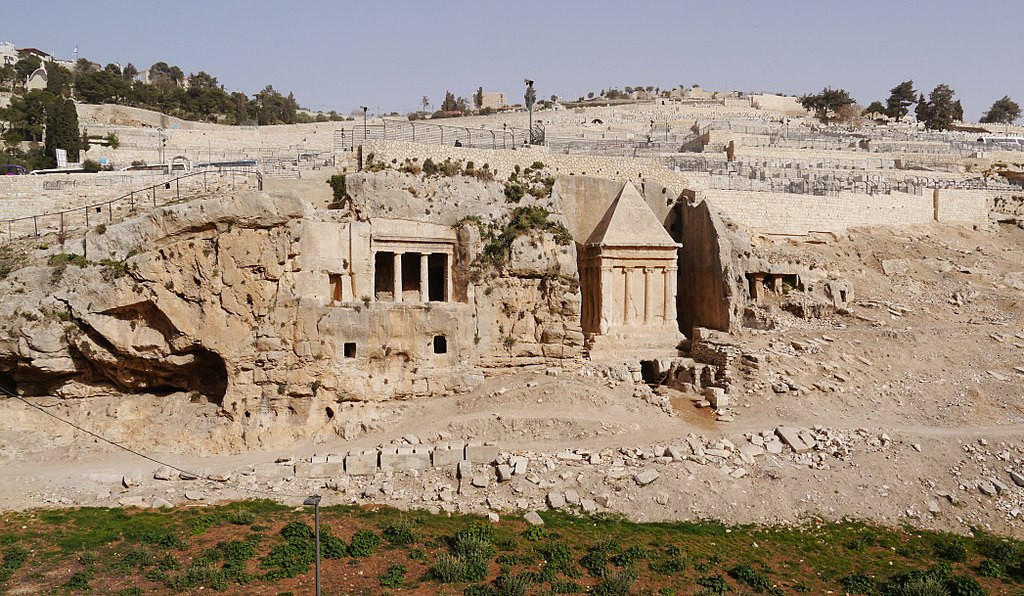 Rock-cut tombs in the Kidron Valley, Jerusalem, representing ancient Jewish funerary architecture.
Rock-cut tombs in the Kidron Valley, Jerusalem, representing ancient Jewish funerary architecture.
In Jerusalem’s Kidron Valley, a historically significant area, numerous graves from various periods in the city’s history are found. Four of the most elaborate tombs are carved directly into the valley’s natural rock. While their exact dating is debated, many historians place them between the 2nd century BCE and the 1st century CE. The Tomb of Zechariah and the Tomb of Absalom are monolithic monuments with interior burial chambers, while the Tomb of Benei Hezir is a man-made cave with a decorative columned façade. These tombs offer insights into Jewish architecture before the Roman era.
12. Leshan Giant Buddha, China: Colossus Carved into a Cliff
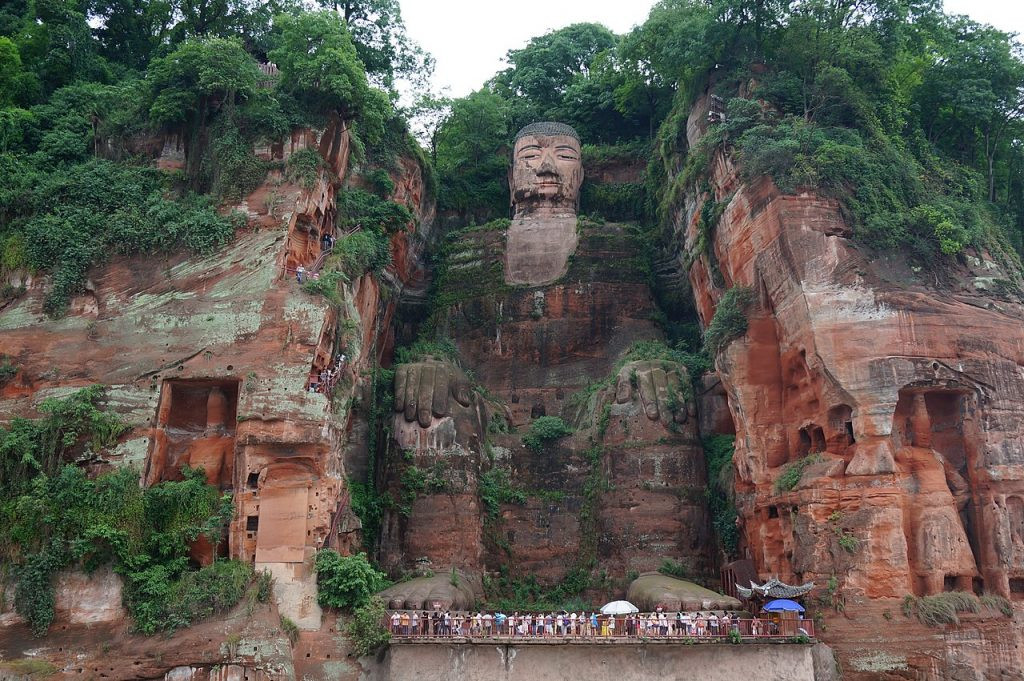 Leshan Giant Buddha, China, a colossal rock-cut Buddha statue carved into a cliff face.
Leshan Giant Buddha, China, a colossal rock-cut Buddha statue carved into a cliff face.
The Leshan Giant Buddha, a colossal statue near Leshan, China, is strikingly carved from a red sandstone cliff face. Created during the Tang Dynasty over approximately 80 years, this UNESCO World Heritage Site attracts countless visitors annually, some climbing the cliff to view the Buddha up close.
13. Dazu Rock Carvings, China: Buddhist Devotion in Stone
Buddhist rock carvings at Dazu, Chongqing, China, a UNESCO World Heritage Site.
Despite Buddhism being practiced by a smaller percentage of the Chinese population today, China still boasts some of the world’s most impressive Buddhist architecture. The Dazu Rock Carvings are a testament to the deep devotion of ancient Chinese Buddhists. Across various sites in Dazu, around 50,000 statues depicting Buddha and other religious figures are carved into the rock.
14. Midas Monument, Turkey: Phrygian Royal Tomb
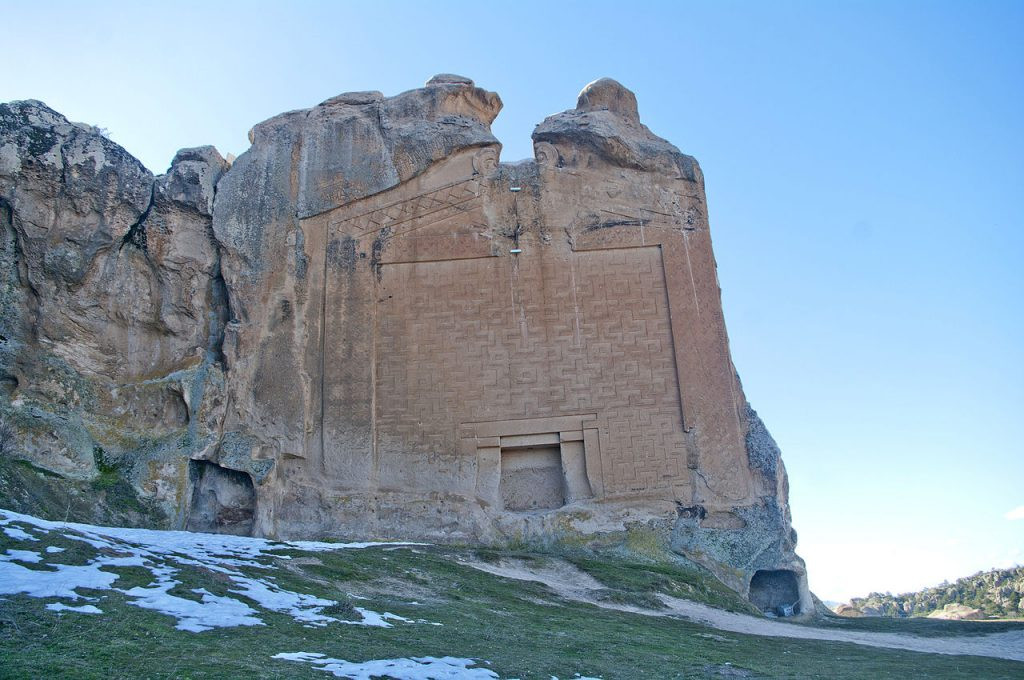 Midas Monument, Yazılıkaya, Turkey, a Phrygian rock-cut tomb with inscriptions.
Midas Monument, Yazılıkaya, Turkey, a Phrygian rock-cut tomb with inscriptions.
The Midas Monument, built by the Phrygian Kingdom in Anatolia during the 7th century BCE, is a significant rock-cut tomb. King Midas, renowned for his legendary wealth, inspired the myth of King Midas. This monolithic rock-cut tomb bears an inscription with Midas’s name, suggesting its commission by him or his predecessors.
15. Udayagiri and Khandagiri Caves, India: Jain Ascetic Retreats
 Rani Gumpha (Queen's Cave), Udayagiri Caves, India, Jain rock-cut caves with two tiers and carvings.
Rani Gumpha (Queen's Cave), Udayagiri Caves, India, Jain rock-cut caves with two tiers and carvings.
The Udayagiri and Khandagiri Caves, initially natural caves, were developed around the 1st century BCE. Associated with Jainism, one of India’s oldest religions, these caves served as ascetic retreats. Rani Gumpha (Queen’s Cave), the most famous, features two tiers of chambers with rock-cut columns.
16. Cappadocian Churches and Monasteries, Turkey: Hidden Christian Sanctuaries
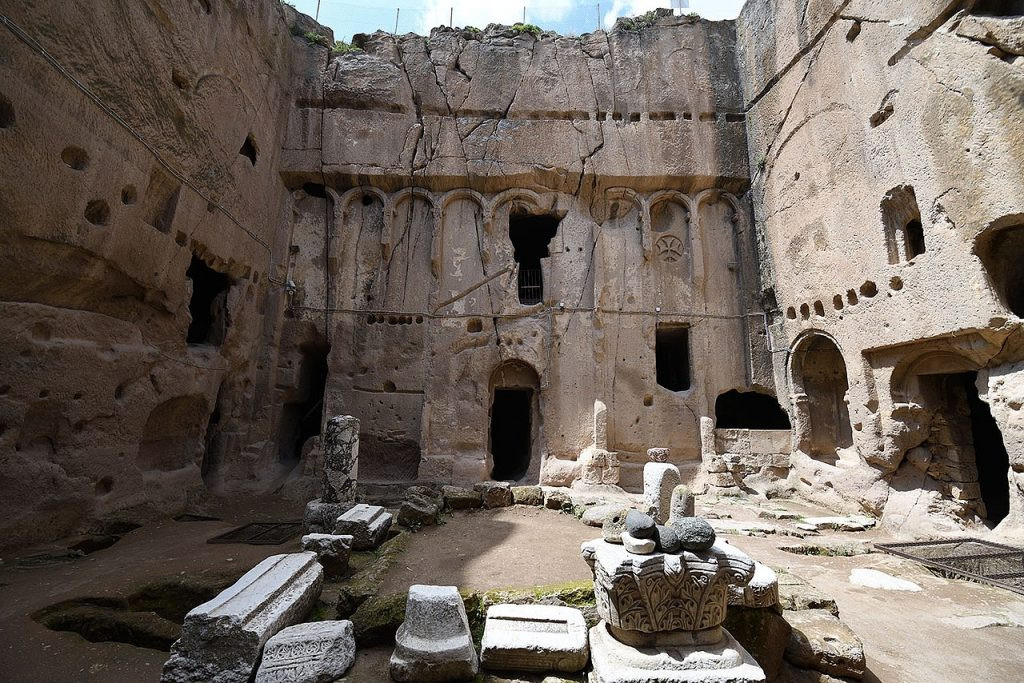 Gumusler Monastery, Cappadocia, Turkey, rock-cut monastery courtyard.
Gumusler Monastery, Cappadocia, Turkey, rock-cut monastery courtyard.
Cappadocia, in Central Anatolia, is famed for its striking rock formations. During the Roman Empire, a significant Christian population resided here, seeking refuge in the region’s caves and caverns. Communities evolved, and numerous religious structures were carved within these caves, providing hidden spaces for worship and protection from persecution.
The Enduring Significance of Rock-Cut Architecture
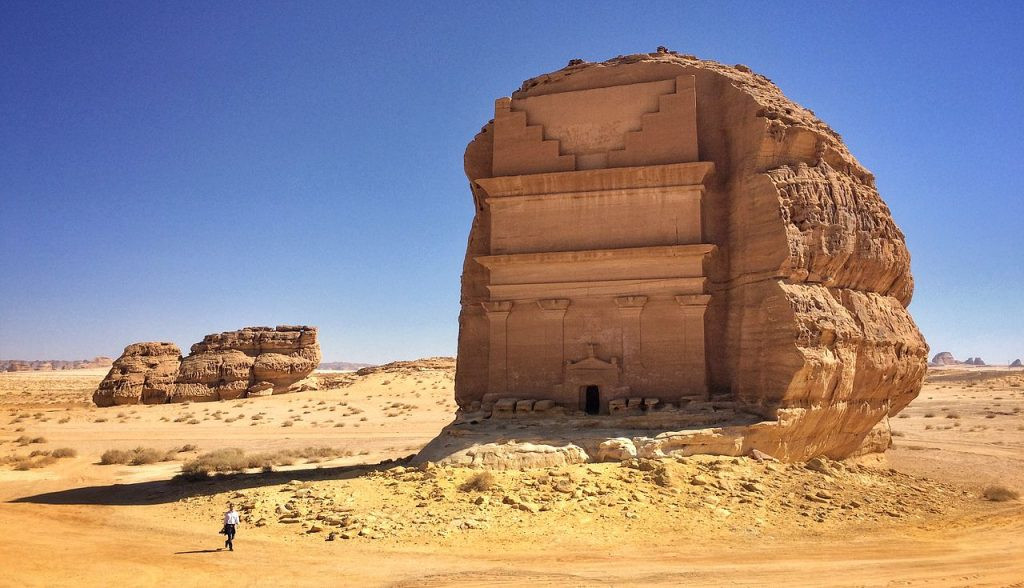 Qasr al-Farid, Hegra, Saudi Arabia, a solitary Nabataean rock-cut tomb showcasing rock-cut architecture in desert landscapes.
Qasr al-Farid, Hegra, Saudi Arabia, a solitary Nabataean rock-cut tomb showcasing rock-cut architecture in desert landscapes.
The examples of rock-cut architecture showcased here demonstrate incredible diversity. Originating from various cultures and religions, across different continents and historical periods, these monuments share a common thread: a distinctive construction method that distinguishes them from conventional buildings.
 Rock Cut Photo
Rock Cut Photo
Constructing edifices from solid rock signifies a deliberate intention to create something meaningful and enduring. This explains why rock-cut architecture is primarily reserved for tombs of important figures, monuments to rulers or deities, and religious structures. While most cultures didn’t carve everyday dwellings or public buildings from stone, they chose this demanding form of construction for their most sacred and significant creations, leaving behind a legacy etched in stone for millennia to come.
